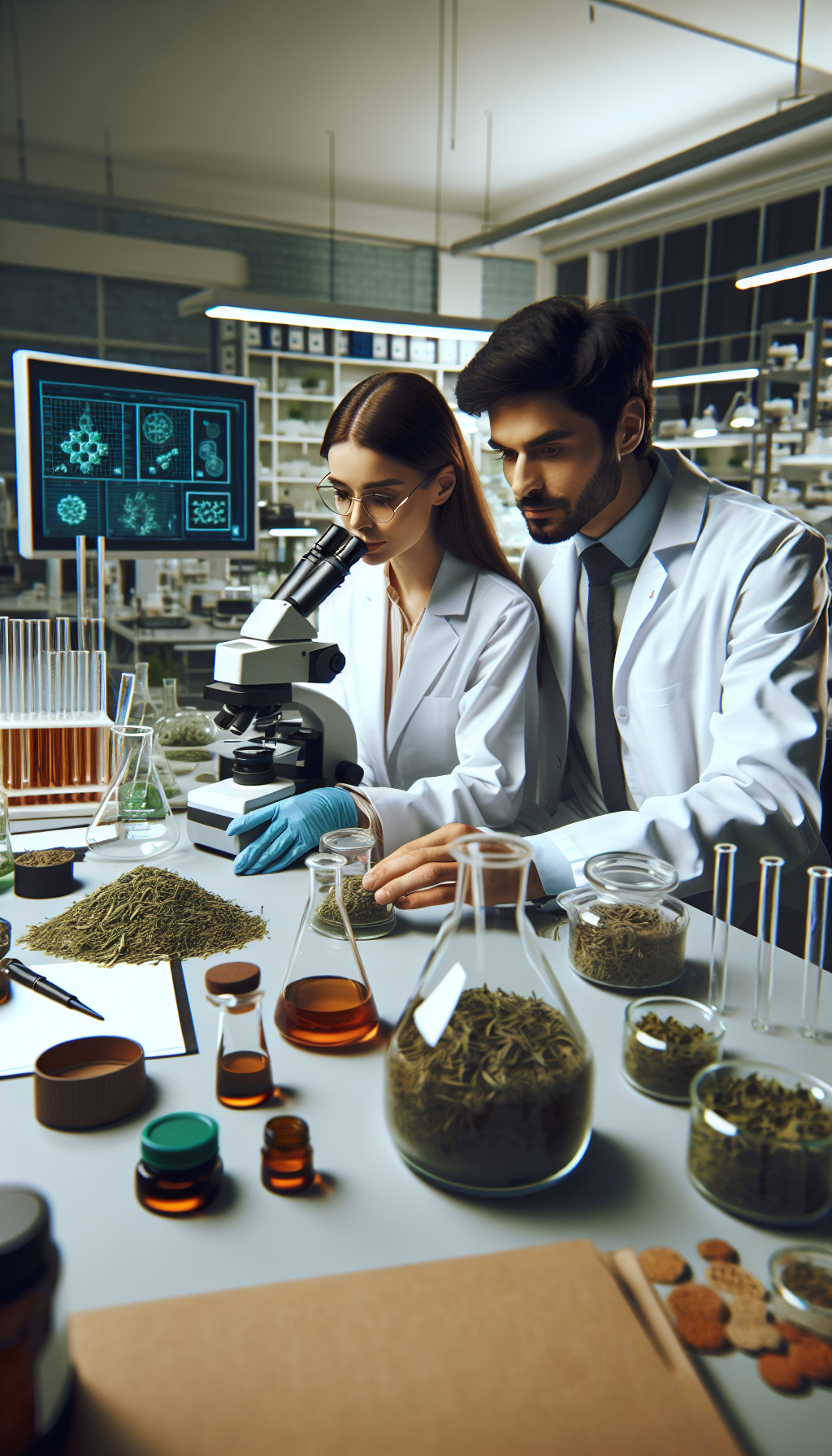Herbal supplements have become a significant part of health regimens worldwide, offering potential benefits for a variety of health concerns. However, unlike pharmaceutical drugs, herbal supplements face unique challenges in standardization, impacting their efficacy and safety. This comprehensive exploration will delve into the complexities of herbal supplement standardization, its importance, and the steps being taken to improve consistency and reliability for consumers.
The Importance of Standardization in Herbal Supplements
Standardization of herbal supplements is the process of ensuring consistency in the concentration of active ingredients. This is crucial because the active compounds found in herbs are responsible for their therapeutic effects. Variations in concentration can lead to under-dosing, which may render the supplement ineffective, or overdosing, which can cause adverse effects.
In the pharmaceutical industry, standardization is rigorously enforced to ensure that each dose of medication delivers a consistent amount of active ingredients. However, herbal supplements are often not held to the same standards due to their classification as dietary supplements rather than drugs. This has led to disparities in the quality and potency of herbal products available on the market.
The Complexities of Herbal Sources
Herbs are complex organisms influenced by numerous factors, such as soil quality, weather conditions, and harvesting methods. These factors can significantly affect the levels of active compounds in plants. For instance, two batches of the same herb harvested from different locations or in different growing seasons may have dissimilar profiles of active constituents. This natural variability adds a layer of complexity to the standardization process.
One way to address this issue is through the cultivation of herbs in controlled environments, which can help minimize variability. This approach, however, can be cost-prohibitive and may not be feasible for all herbs, especially those that grow in specific climates or regions.
Methods of Standardization
There are several methods used to standardize herbal supplements, including:
- Marker Compound Standardization: Identifying and quantifying specific ‘marker’ compounds believed to be responsible for the herb’s effects.
- Bioassay Standardization: Measuring the biological activity of an extract against a standard.
- Chemical Fingerprinting: Analyzing the complex mixture of compounds present in the herb and ensuring a consistent profile across batches.
Despite these methods, achieving complete standardization remains challenging due to the inherent complexity of natural products and the limitations of current analytical techniques.
The Role of Regulatory Agencies
Regulatory agencies like the U.S. Food and Drug Administration (FDA) have guidelines for good manufacturing practices (GMPs) that apply to dietary supplements, including herbal products. However, the enforcement of these guidelines is often less stringent than for prescription medications. The lack of mandatory testing for potency or efficacy before reaching the market is a significant gap in the regulation of herbal supplements.
To support the points about regulatory challenges, the American Botanical Council provides valuable insights into the current landscape of herbal supplement regulation and standardization.
The Impact of Inadequate Standardization
Insufficient standardization can lead to several issues, including:
- Inconsistent Dosage: Without standardization, consumers may not receive the intended dose of active ingredients.
- Variability in Efficacy: Fluctuating levels of active compounds can result in unpredictable therapeutic outcomes.
- Safety Concerns: Uncontrolled concentrations of certain ingredients can lead to toxicity or adverse interactions with other medications.
Understanding the impact of these challenges is critical for those looking to integrate herbal supplements into their health routine, especially for individuals with specific health concerns such as cardiovascular health.
Advancements in Standardization
Recent advancements in analytical chemistry and biotechnology are paving the way for more precise standardization methods. High-performance liquid chromatography (HPLC) and mass spectrometry (MS) are examples of technologies that are improving the accuracy of compound identification and quantification in herbal supplements.
Research initiatives, such as those found at Phytochemical Society of Europe, offer in-depth discussion on the latest advancements in phytochemical analysis and standardization methods.
The Role of Third-Party Testing
Third-party testing by independent laboratories is becoming an increasingly important aspect of ensuring the quality and standardization of herbal supplements. These organizations can provide unbiased verification that a product contains the ingredients listed on the label at the amounts claimed.
The United States Pharmacopeia (USP) is a scientific nonprofit organization that sets standards for the identity, strength, quality, and purity of medicines, food ingredients, and dietary supplements. The USP Verified Mark on a supplement label indicates that the product has been rigorously tested and meets high standards for quality and purity.
Educating Consumers
Education is a crucial component of navigating the herbal supplement market. Consumers need to be aware of the importance of purchasing products from reputable sources that adhere to GMPs and utilize third-party testing. Reading labels carefully and understanding the meaning of terms like "standardized extract" can empower consumers to make informed decisions.
For further reading on the subject of supplement effectiveness and quality control, the articles on advancements in personalized supplement formulations and the effectiveness of topical vs. oral supplements provide valuable information.
The Future of Herbal Supplement Standardization
The future of herbal supplement standardization looks promising, with ongoing research and development aimed at improving the precision and reliability of standardization methods. Collaborative efforts between the scientific community, industry, and regulatory bodies are essential in establishing more robust standards that can enhance the safety and efficacy of herbal supplements for consumers.
For professionals and consumers alike, understanding the complexities of herbal supplement production, from the role of excipients to the impact of bioavailability, is essential for maximizing health outcomes. The insights provided in the article on the role of excipients in medications offer a deeper understanding of these critical components.
In conclusion, while the challenges of herbal supplement standardization are significant, the efforts to overcome these obstacles are ongoing and evolving. As the industry continues to grow, it is imperative that we strive for the highest standards to ensure that herbal supplements are safe, effective, and beneficial for all who choose to use them.



